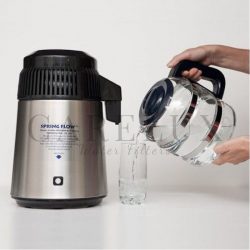Service
Reverse Osmosis Membranes, can be replaced every 5* years. However to prevent oxidation on thin-film RO membranes, the feed water must be dechlorinated. Most membranes will have some chlorine tolerance before there is an observable decrease in salt rejection. Chlorine on the membrane can be discovered by an initial loss of membrane flux followed by an increase in membrane flux and salt passage.
Reverse Osmosis Membranes
Reverse Osmosis Membrane. The Reverse Osmosis Membrane is a thin membrane with pores small enough to pass pure water through while rejecting larger molecules such as dissolved salts (ions) and other impurities such as bacteria.
Membranes are easily damaged by chlorine in the feed water. Chlorine damage to the membrane can lead to lower salt rejection and poor-quality permeate, which in turn could result in costly membrane replacement and down-time.
Reverse Osmosis water filtration systems that incorporate carbon block filters are an effective way to remove up to 98% of chlorine in water. Carbon block prefilters will not only remove chlorine in water, but also protect delicate RO membranes that can be damaged by contact with chlorine.





